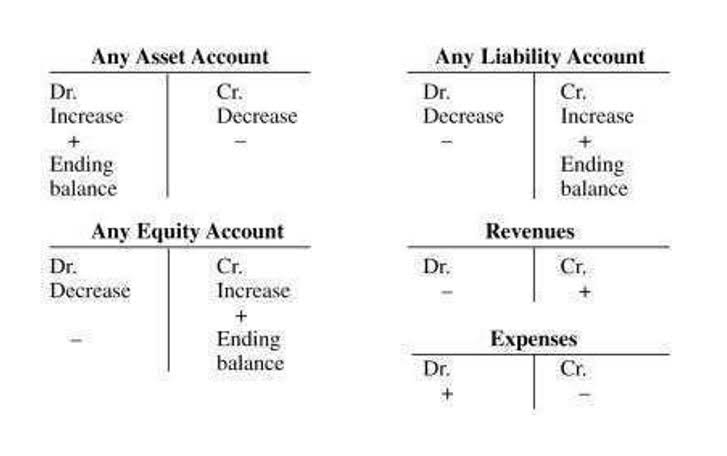The p-value for each predictor (independent variable) evaluates the null hypothesis that the variable shows no correlation with the dependent variable. The linear regression model’s slope coefficient is significant in econometrics (financial analysis and modeling). It shows how much change one unit in the independent variable will introduce to the dependent variable. The regression equation intercept shows us the expected mean value of the target (dependent variable) when the independent variable is equal to zero. The intercept has no meaning for the model, as the purpose of regression analysis is to evaluate the relationship between the predictor and the target. Regression Analysis represents a set of statistical methods and techniques, which we use to evaluate the relationship between variables.
- They will fit a simple regression model where they use dosage as the predictor variable and blood pressure as the response variable.
- One method of understanding the relationship between the variables is the line of best fit method.
- At the heart of a regression model is the relationship between two different variables, called the dependent and independent variables.
- An example of the application of econometrics is to study the income effect using observable data.
- The scatter plot is not very helpful for presenting forecasts, but a standard line chart does a much better job.
Using this data can cause the cost function not to be descriptive of the product relationship between ‘x’ and ‘y’. (3) The dispersion of data points should be the same at the different levels of analysis of the scatter-graph which help the user visually determine the degree to which this assumption is met. Statistical evidence can only establish the presence or absence how do i write a business plan for a nonprofit organization of association between variables whether causation exists or not depends purely on reasoning. The closer the relationship between two variables, the greater the confidence that may be placed in the estimates. Excel remains a popular tool to conduct basic regression analysis in finance, however, there are many more advanced statistical tools that can be used.
What Is Regression Analysis in Business Analytics?
The scatter plot is not very helpful for presenting forecasts, but a standard line chart does a much better job. Financial analysts also use it often to forecast returns and the operational performance of the business. We can use it to find the relation of a company’s performance to the industry performance or competitor business. A further calculation is the coefficient of determination which is calculated as r2.
Another possibility is that the relationship between the natural logarithm of Y and the natural logarithm of X is linear. It’s also possible that the relationship between the square root of Y and X is linear. We can now use the regression equation to forecast the sales revenue for the next ten weeks (or as long as we like). Overfitted models fit the sample data well but do not fit additional samples or the entire population.
- Additional variables such as the market capitalization of a stock, valuation ratios, and recent returns can be added to the CAPM model to get better estimates for returns.
- Logistic regression is one in which dependent variable is binary is nature.
- Note that you can have several explanatory variables in your analysis—for example, changes to GDP and inflation in addition to unemployment in explaining stock market prices.
- We can use it to find the relation of a company’s performance to the industry performance or competitor business.
- The coefficient of variation (also known as R2) is used to determine how closely a regression model «fits» or explains the relationship between the independent variable (X) and the dependent variable (Y).
The assumption that what has happened in the past is a good indicator of what will happen in the future is a simplistic assumption. In the real world, changes in the environment (technological, social, environmental, political, economic etc) can all create uncertainty, making forecasts made from past observations unrealistic. Take a look at the graph below to see a graphical depiction of a regression equation. In this graph, there are only five data points represented by the five dots on the graph. Linear regression attempts to estimate a line that best fits the data (a line of best fit) and the equation of that line results in the regression equation.
Understanding Regression
In financial modeling, we can employ regression analysis to estimate the strength of the relationship between variables and subsequently forecast this relationship’s future behavior. It fits in any setting where we hypothesize there is (or not) a correlation between two or more variables. The company wants to understand the relationship between the activity level and total production cost so that it can forecast total production costs going forward. When formulating the linear regression line of best fit to the points on the scatter plot, the mathematical analysis generates a linear equation where the sum of the squared residuals is minimized.
Use Statistical Regression to Estimate Cost Behavior
Using regression analysis helps you separate the effects that involve complicated research questions. It will allow you to make informed decisions, guide you with resource allocation, and increase your bottom line by a huge margin if you use the statistical method effectively. Obtaining observations from longer periods will require going back to many past periods where observations do not relate well to present conditions. Going further back in time runs the risk of differences due to technology changes, inflation and product modifications.
Accounting Term: What Is Simple Linear Regression Analysis?
This is usually the result of trying to get too much out of a small data set. Omitting an essential variable by a flawed model set up makes it uncontrolled, and this can bias the results for the included variables. To control a variable, all we need to do is have it in our regression model. We can plot the function on a graph, where a is the intercept and b is the slope. It shows us the measure of the change in the target variable due to changes in other variables.
On analysis, the electricity costs per month in ABC Ltd. vary with the number of working days in the month, the average daily temperature outside the building during the month and the number of employees. The above example shows how to use the Forecast function in Excel to calculate a company’s revenue, based on the number of ads it runs. In this lesson, we took a look at the least squares method, its formula, and illustrate how to use it in segregating mixed costs. Dummies has always stood for taking on complex concepts and making them easy to understand. Dummies helps everyone be more knowledgeable and confident in applying what they know.
What Is a Clustered Chart in Excel?
If one variable is going up when the other is going down, then the covariance will be negative, and vice versa. The high low method excludes the effects of inflation when estimating costs. This indicates the value of beta for Nike stock is 0.83, which indicates that Nike stock had lower volatility versus the S&P 500 for the time period of interest. This predicted value of y indicates that the anticipated revenue would be $18,646,700, given the advertising spend of $150,000.
Linear regression is the most basic and widely used form of regression analysis. It models the linear relationship between a dependent variable and one or more independent variables. The goal is to find the best-fitting line that minimizes the sum of squared differences between observed and predicted values. We need to solve a problem when running the regression model, and this is to fit a straight line to a set of pairs of observations of the dependent and independent variables. The line of best fit is where the sum of the squares of the vertical deviations (distances) between observation points and the line is at its minimum. This is the method of ordinary least squares (OLS) and the one we most commonly apply to a linear regression model.











